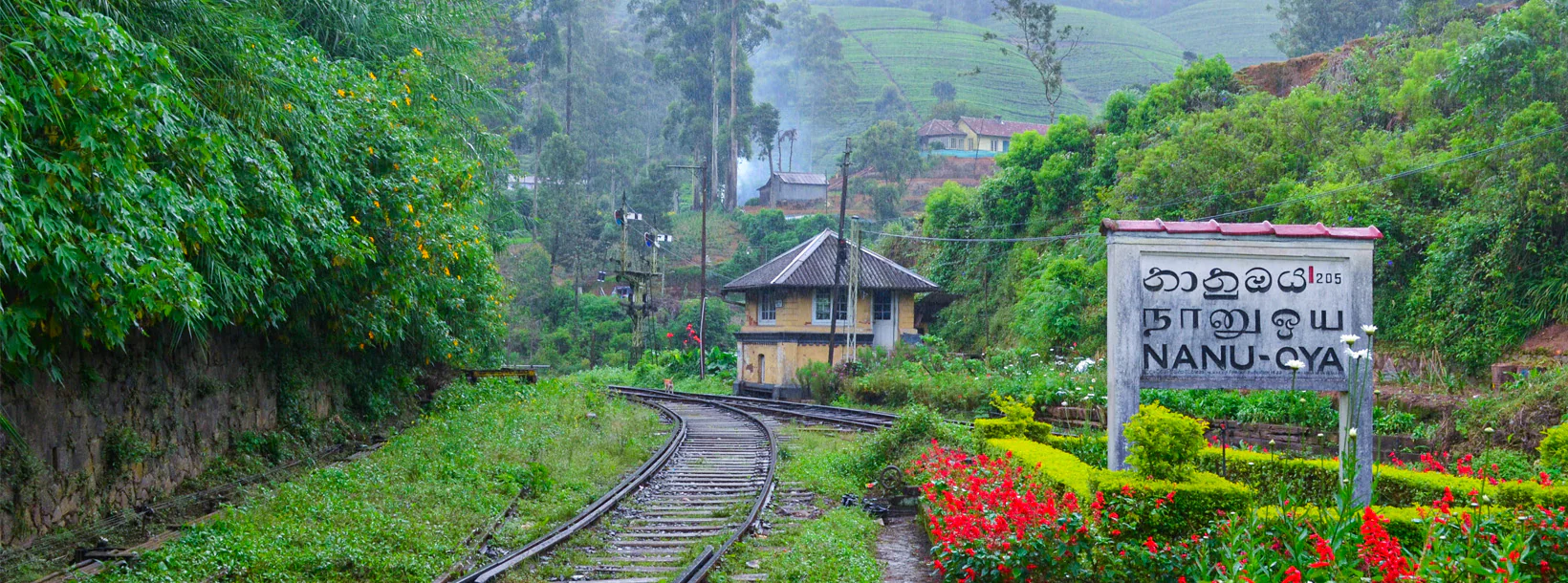
Nanu Oya City
Nanu Oya: Quaint town in Sri Lanka's hill country, known for its cool climate, tea plantations, and as a railway station on the scenic route to Ella.
Nanu Oya
Nanu Oya è un villaggio dello Sri Lanka, che prende il nome dal fiume Nanu Oya. Si trova nel distretto di Nuwara Eliya, nella provincia centrale e si trova a circa 8 km (5,0 miglia) da Nuwara Eliya.
Informazioni su Nuwara Eliya District
Nuwara Eliya è una città della provincia centrale dello Sri Lanka. Si trova a un'altitudine di 1.868 m (6.128 piedi) negli altopiani centrali ed è considerato uno dei luoghi più importanti per la produzione di tè in Sri Lanka. La città è dominata da Pidurutalagala, la montagna più alta dello Sri Lanka.
A causa dell'alta quota, Nuwara Eliya ha un clima molto più fresco rispetto alle pianure dello Sri Lanka, con una temperatura media annua di 16 °C. Ma la temperatura varia e talvolta può raggiungere i 3 °C. Nei mesi invernali di notte fa piuttosto freddo e può anche esserci del gelo. Anche se si riscalda rapidamente quando il sole tropicale sale più in alto durante il giorno.
Ilsingalese e il tamil sono la lingua principale parlata a Nuwara Eliya. La popolazione è un misto di singalesi, tamil e mori. Molti lavoratori delle piantagioni di tè sono indiani tamil, portati in Sri Lanka dagli inglesi nel XIX secolo.
L'Horton Plains National Park e il Victoria Park sono le principali attrazioni di Nuwara Eliya.
Informazioni su Central Province
La provincia centrale dello Sri Lanka è costituita principalmente da terreni montuosi. La provincia ha una superficie di 5.674 km² e una popolazione di 2.421.148 abitanti. Alcune città importanti includono Kandy, Gampola (24.730), Nuwara Eliya e Bandarawela. La popolazione è un misto di singalesi, tamil e mori.
Sia la capitale collinare Kandy che la città di Nuwara Eliya si trovano all'interno della Provincia Centrale e di Sri Pada. La provincia produce gran parte del famoso tè di Ceylon, piantato dagli inglesi nel 1860 dopo che una malattia devastante uccise tutte le piantagioni di caffè della provincia. La provincia centrale attira molti turisti, con città collinari come Kandy, Gampola, Hatton e Nuwara Eliya. Il dente del tempio o Dalada maligawa è il principale luogo sacro della provincia di Centrel.
Il clima è fresco e molte zone a circa 1500 metri hanno spesso notti fredde. Le pendici occidentali sono molto umide, in alcuni punti arrivano a quasi 7000 mm di pioggia all'anno. Le pendici orientali fanno parte della zona medio-asciutta poiché riceve pioggia solo dal monsone nord-orientale. Le temperature vanno dai 24° C a Kandy a soli 16° C a Nuwara Eliya, che si trova a 1.889 m sul livello del mare. Le montagne più alte dello Sri Lanka si trovano nella provincia centrale. Il terreno è prevalentemente montuoso, con profonde valli che lo attraversano. Le due principali regioni montuose sono il massiccio centrale e la catena delle Knuckles a est di Kandy.
About Nuwara Eliya District
Nuwara Eliya is a town of central province in Sri Lanka. It is located at an altitude of 1,868 m (6,128 ft) in the central highlands and is considered one of the most important locations for Tea production in Sri Lanka. The town is overlooked by Pidurutalagala, the highest mountain in Sri Lanka.
Due to the high altitude, Nuwara Eliya has a much cooler climate than the lowlands of Sri Lanka, with a mean annual temperature of 16 °C. But the temperature changes and sometimes it can be like 3°C. In the winter months it is quite cold at night, and there can even be frost. Although it rapidly warms up as the tropical sun climbs higher during the day.
Sinhala and Tamil is the major language spoken in the Nuwara Eliya. The population is a mixture of Sinhalese, Tamil and the Moors. Many tea plantation workers are Indian Tamils, brought over to Sri Lanka by the British in the 19th century.
Horton Plains National Park and Victoria Park are main attraction in Nuwara Eliya.
About Central Province
The Central Province of Sri Lanka consists primarily of mountainous terrain. The province has an area of 5,674 km², and a population of 2,421,148. Some major towns include Kandy, Gampola (24,730), Nuwara Eliya and Bandarawela. The population is a mixture of Sinhalese, Tamil and the Moors.
Both the hill capital Kandy and the city of Nuwara Eliya are located within the Central Province as well as Sri Pada. The province produces much of the famous Ceylon tea, planted by the British in the 1860s after a devastating disease killed all the coffee plantations in the province. Central Province attracts many tourists, with hill station towns such as Kandy, Gampola, Hatton and Nuwara Eliya. Temple tooth or Dalada maligawa is the main sacred place in Centrel province.
The climate is cool, and many areas about 1500 meters often have chilly nights. The western slopes are very wet, some places having almost 7000 mm of rain per year. The eastern slopes are parts of the mid-dry zone as it is receiving rain only from North-Eastern monsoon. The Temperatures range from 24°C at Kandy to just 16°C in Nuwara Eliya, which is located 1,889 m above sea level. The highest mountains in Sri Lanka are located in the Central Province. The terrain is mostly mountainous, with deep valleys cutting into it. The two main mountain regions are the central massif and the Knuckles range to the east of Kandy.







